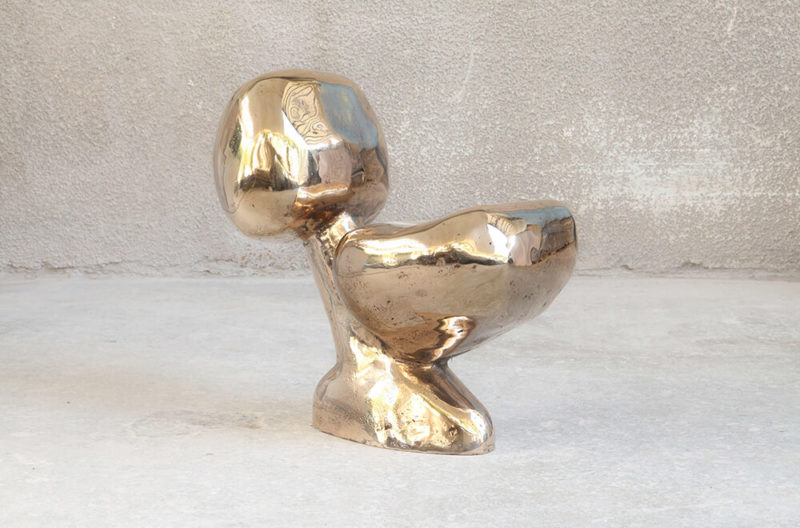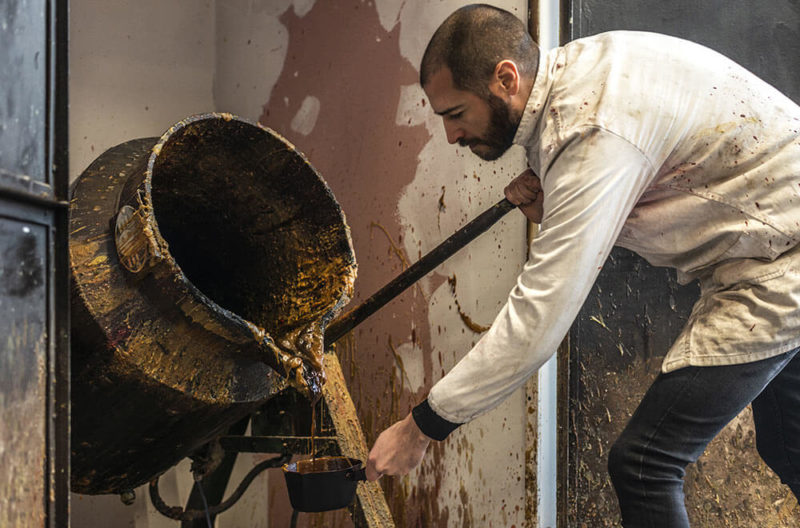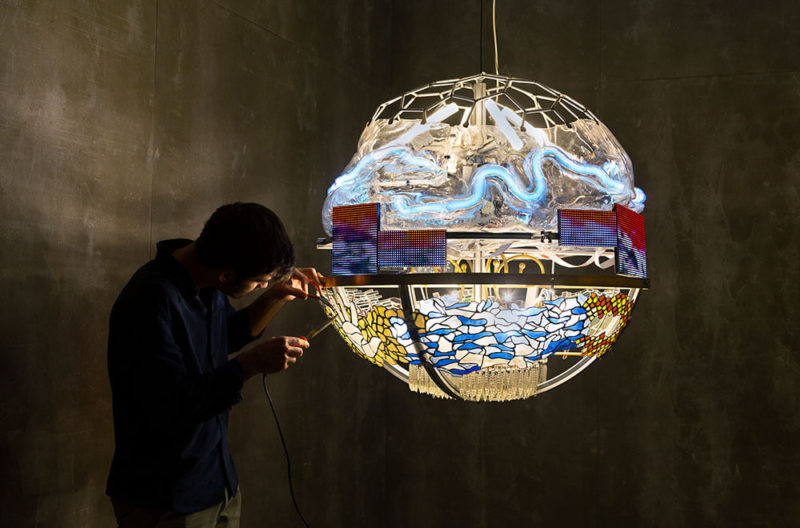Athens
Cheap rents and beautiful weather are not the only elements attracting expat designers back to the city – the art and design scene is humming with energy and opportunities.
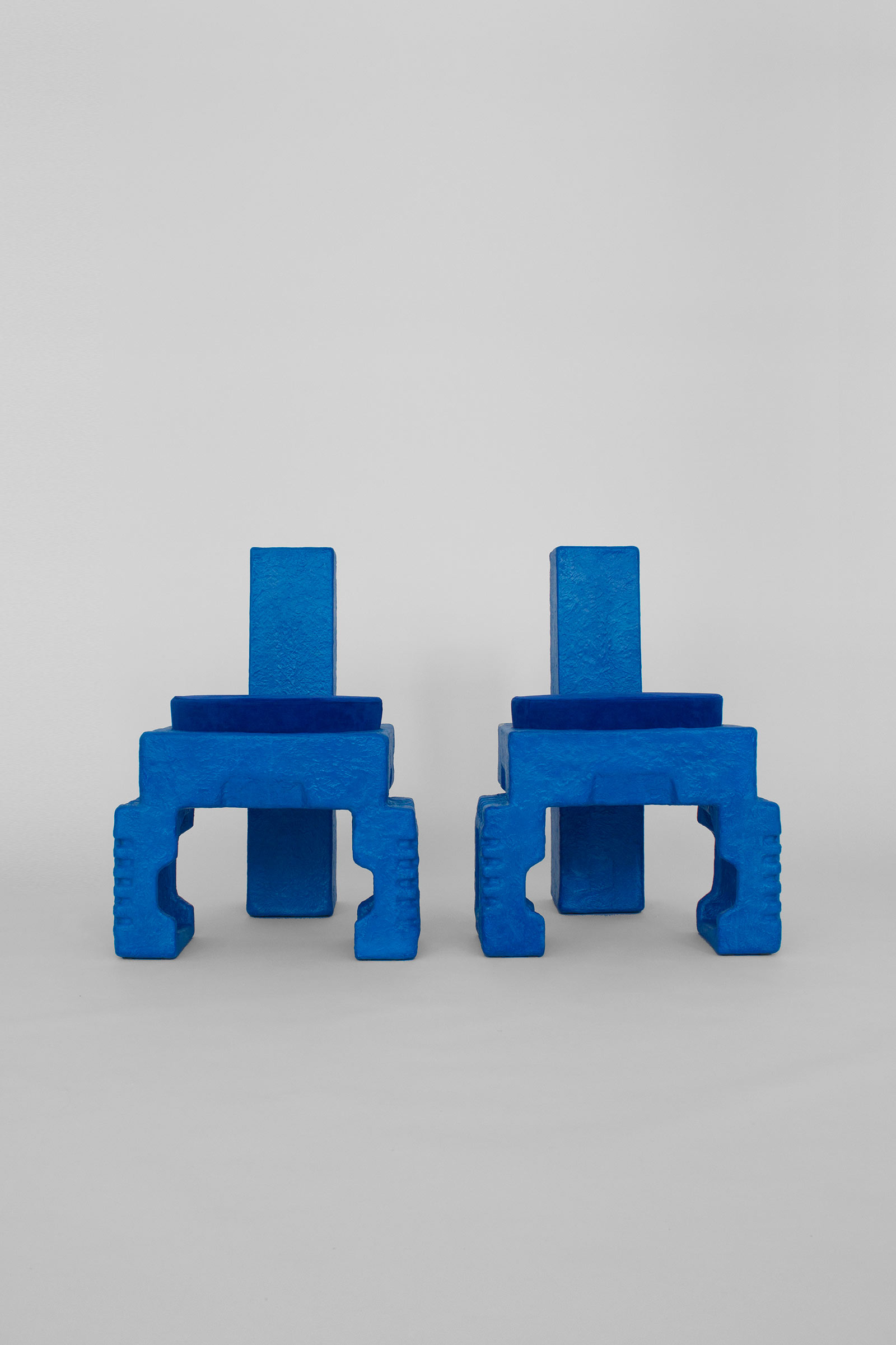
Savvas Laz, set of two chairs from the ‘Trashformers’ series, 2019
COURTESY: Savvas Laz
OVER A DECADE after Greece’s economic crisis, the cultural scene in Athens is burgeoning. Many designers have returned to their homeland and are taking advantage of affordable studio rents, such as near the Acropolis or the port, and more galleries have opened spaces. This combined influx of activity is revitalising the ancient capital. While some commentators have dubbed Athens the “new Berlin”, owing to the increasing number of artists gravitating towards the city, what emerges is that Athens is forging an international identity of its own.
“The design field in Athens did not exist five or six years ago but right now it’s becoming more vibrant and alive,” the designer Kostas Lambridis says. “I feel that I’m witnessing something being born. In 10 or 20 years, we’ll be talking about these years as being something instrumental for art and design.”
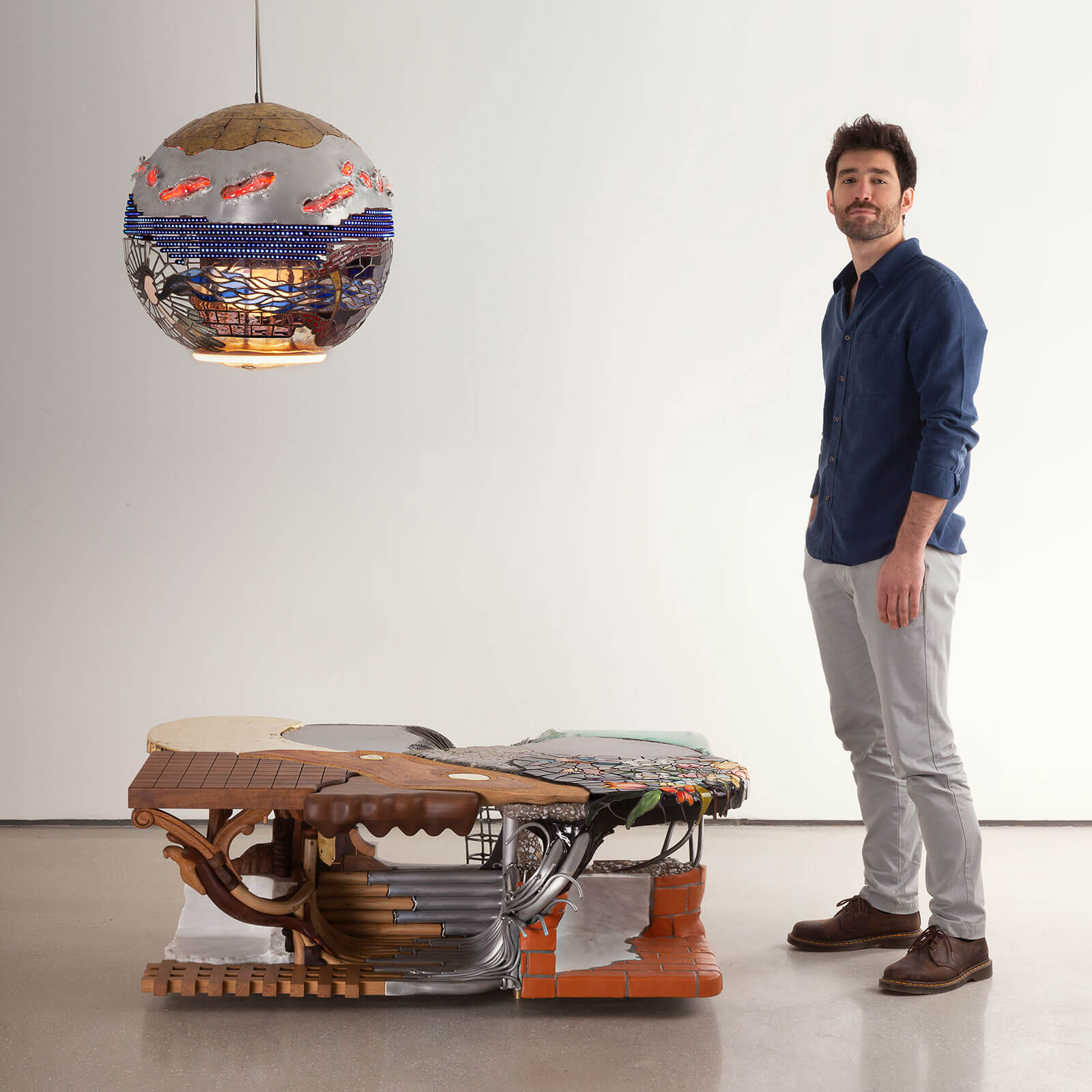
Kostas Lambridis with ‘Faux Baroque’ table, 2021
COURTESY: Carpenters Workshop Gallery
Lambridis, 34, grew up in Athens but left at the age of 18. After studying design engineering on the Cycladic island of Syros, he moved to the Netherlands to work for acclaimed Spanish designer Nacho Carbonell and pursue an MA at Design Academy Eindhoven. Upon returning to Athens to establish his own studio in 2018, he found it greatly changed. “I discovered more than what I was expecting,” he recalls. “But there are still limitations. There’s not a single glass-blowing workshop whereas in the Netherlands there are 20 or 30.”
He describes the multi-faceted character of Athens as “dirty and beautiful, full of life and death.” This undeniably seeps into his hybridised, baroque-influenced furniture pieces, referencing innovation and entropy, that are assembled from a miscellaneous collection of discarded and new elements, including embroidered textiles by his mother.
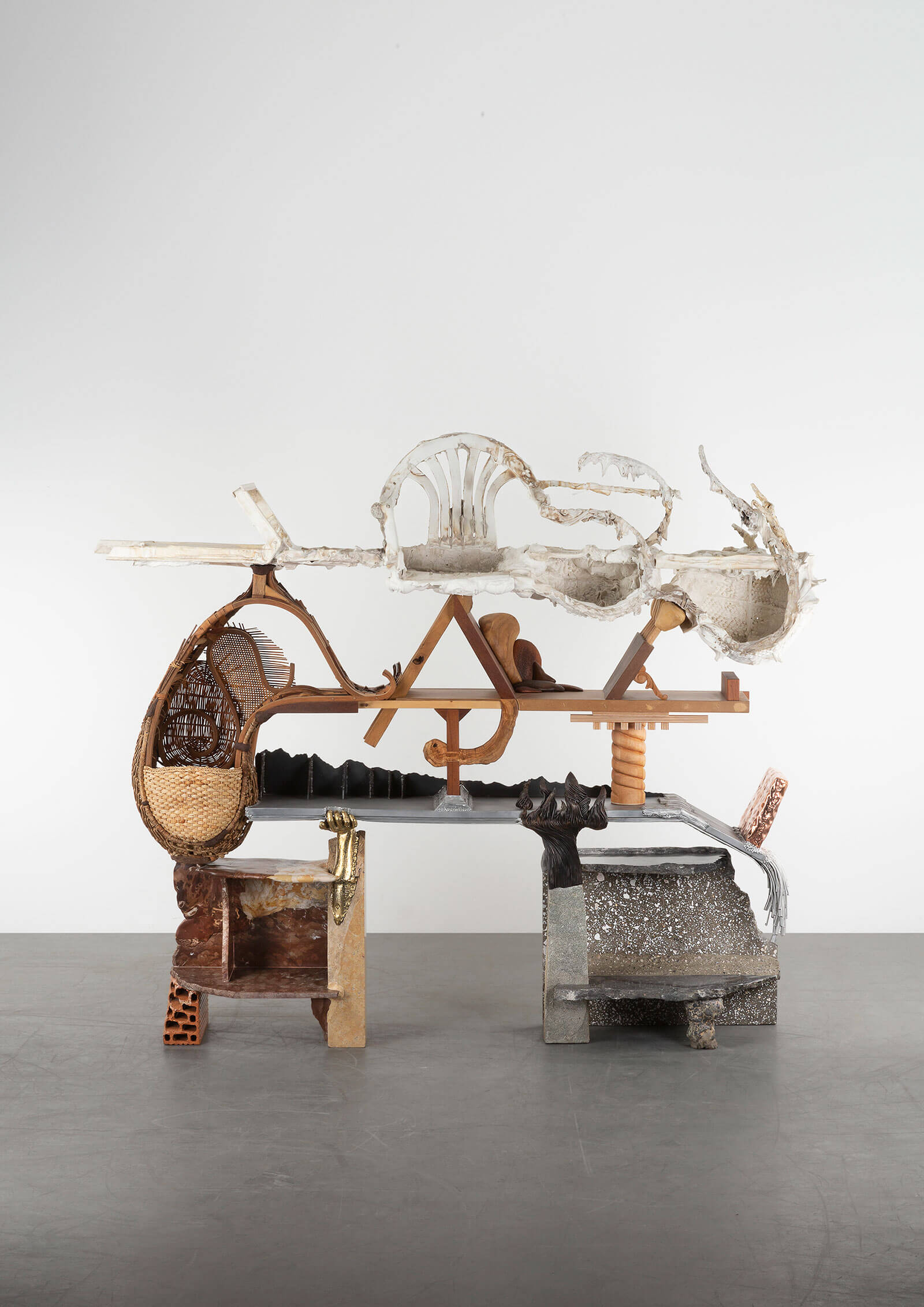
Kostas Lambridis, ‘It’s Not Enough’, 2020
COURTESY: Carpenters Workshop Gallery
Lambridis is one of several designers who have re-settled in Athens over the last few years, typically after an MA abroad. During this period, Gagosian has opened an outpost and documenta – the vast exhibition that takes place every five years in Kassel, Germany – held part of its 2017 edition here. Mega collector Dakis Joannou, who lives in Athens, has an art space, the DESTE Project Space Slaughterhouse, on Hydra island, that is a magnet for art lovers. In June 2019, American collectors, fresh from Art Basel, flocked to Hydra to see American artist Kiki Smith’s exhibition in the former slaughterhouse. What’s also alluring for collectors and foreign investors is the Greek Golden Visa recently launched by the government. It enables those who invest a minimum of €250,000 in real estate to obtain a permanent residency card.
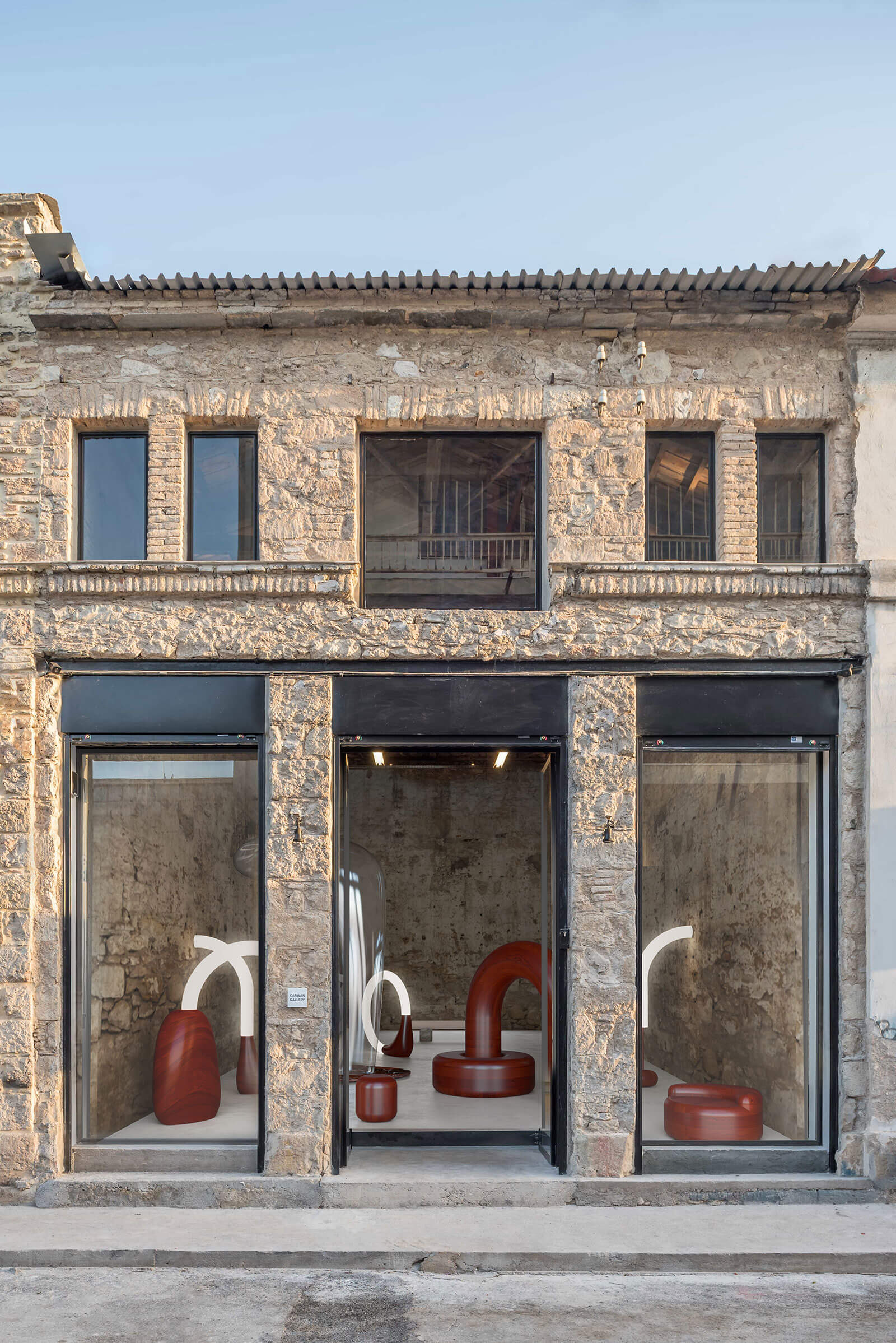
Render of proposed Objects of Common Interest solo show at Carwan Gallery (September 2021)
COURTESY: Objects of Common Interest
Against this backdrop, Carwan Gallery relocated from Beirut to Athens last September with the intention of representing Greek and international designers. “Athens is undergoing a cultural renaissance and there’s an interesting energy, like when we arrived in Lebanon ten years ago,” opines Carwan’s founder, Nicolas Bellavance-Lecompte. He felt compelled to leave Lebanon due to its economic crisis, the crashing of its currency and the port explosion in Beirut last August. Athens appealed due to its geographical location: in Europe yet near the Middle East. Believing Athens to be benefiting from an “exodus of the affluent class” from Lebanon, Turkey, Iraq and Syria, he says: “Athens is a natural choice because it’s easy for [ex-patriates] to return home.”
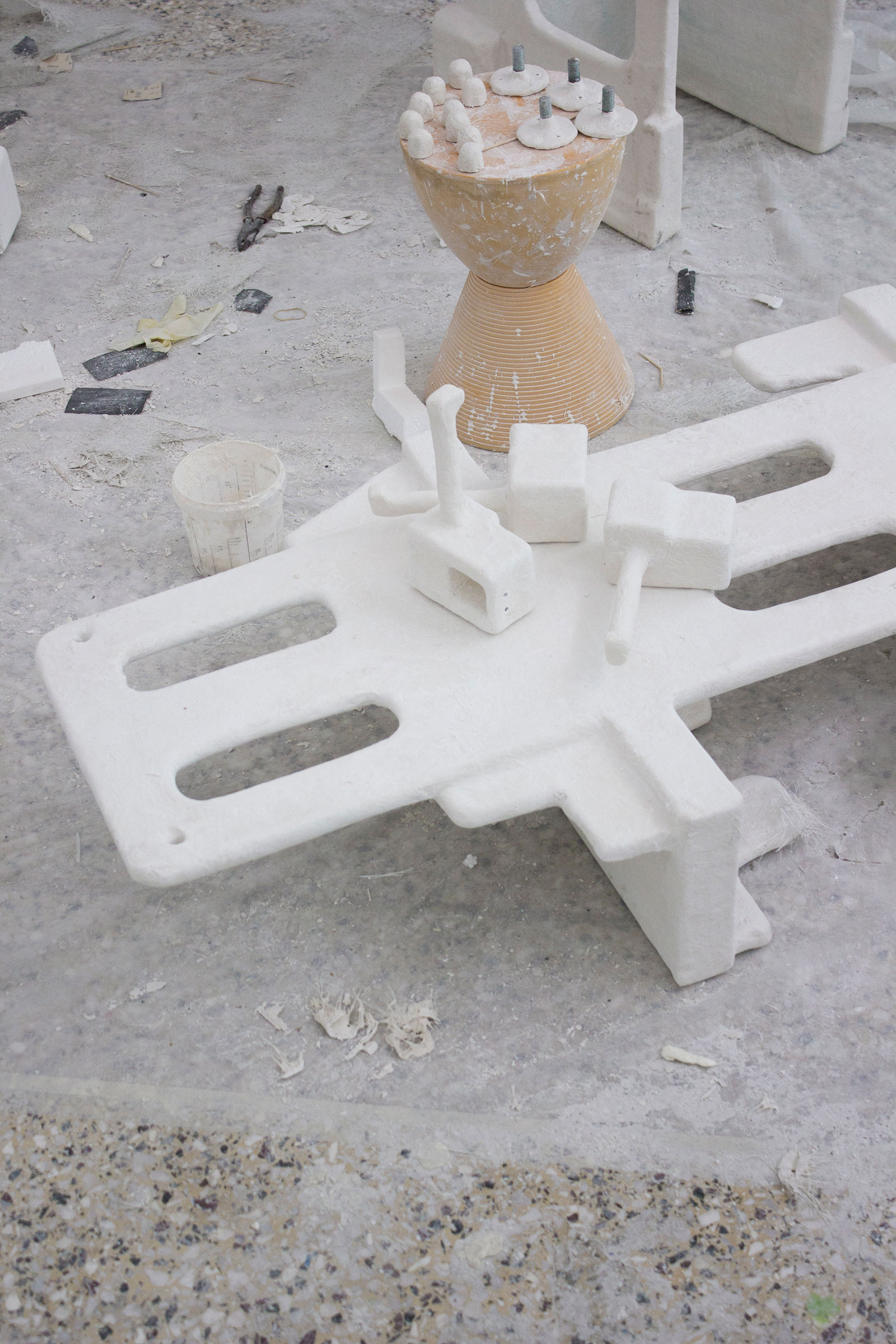
Savvas Laz’s studio in Athens
COURTESY: Savvas Laz
Bellavance-Lecompte’s new business partner, the French, Athens-based architect Quentin Moyse, renovated their space near the port of Piraeus and the art galleries Rodeo and The Intermission. The proximity to the port makes it convenient for collectors visiting the Greek islands. “Several foreign clients came in their boat to visit us last summer,” recounts Bellavance-Lecompte. “There’s a restaurant and wine bar on our street – so you can discover art, eat and drink exceptional wine in a nice area with a completely different atmosphere from the rest of Athens. No design galleries existed before us and people are expecting us to bring collectible design to Greece.”
In the coming months, Carwan is teaming up with Carpenters Workshop Gallery on a solo show on Lambridis in a “spectacular” venue. “It’ll be a big retrospective because Kostas has never had an exhibition in Athens,” says Bellavance-Lecompte. And in September, Carwan will open an exhibition by Objects of Common Interest, founded by the Greek, New York-based Eleni Petaloti and Leonidas Trampoukis. Based on “Greek memories” and organic shapes found in nature, it features abstract pieces of wooden furniture made with Greek craftsmen and lighting in curved forms, marking the duo’s first foray into wood.
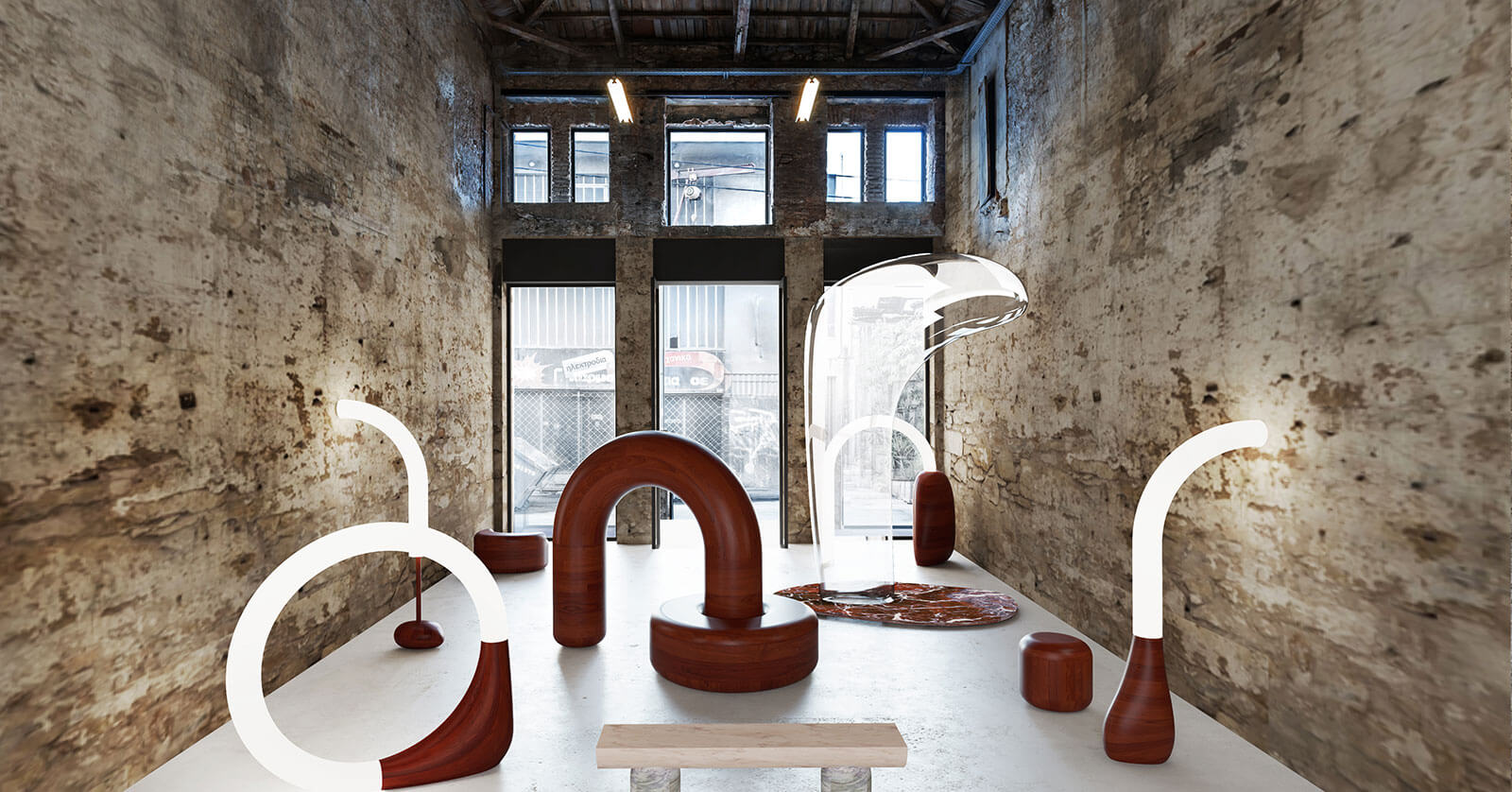
Render of proposed Objects of Common Interest solo show at Carwan Gallery (September 2021)
COURTESY: Objects of Common Interest
Petaloti and Trampoukis both left Greece in 2007 to attain MAs in architecture from Columbia University. “There was a brain drain from 2010-2019, although we left earlier during the golden years of Greece,” Petaloti says. Maintaining ties with their homeland has always been at the core of the designers’ practice, despite their international reach (the duo are currently working on exhibitions for the Noguchi Museum in New York and Etage Projects in Copenhagen). “From the very beginning, we said that whatever we made, we would make it in Greece – but initially it was difficult to convince [clients] because they were insecure about Greeks’ reputation for being unreliable.”
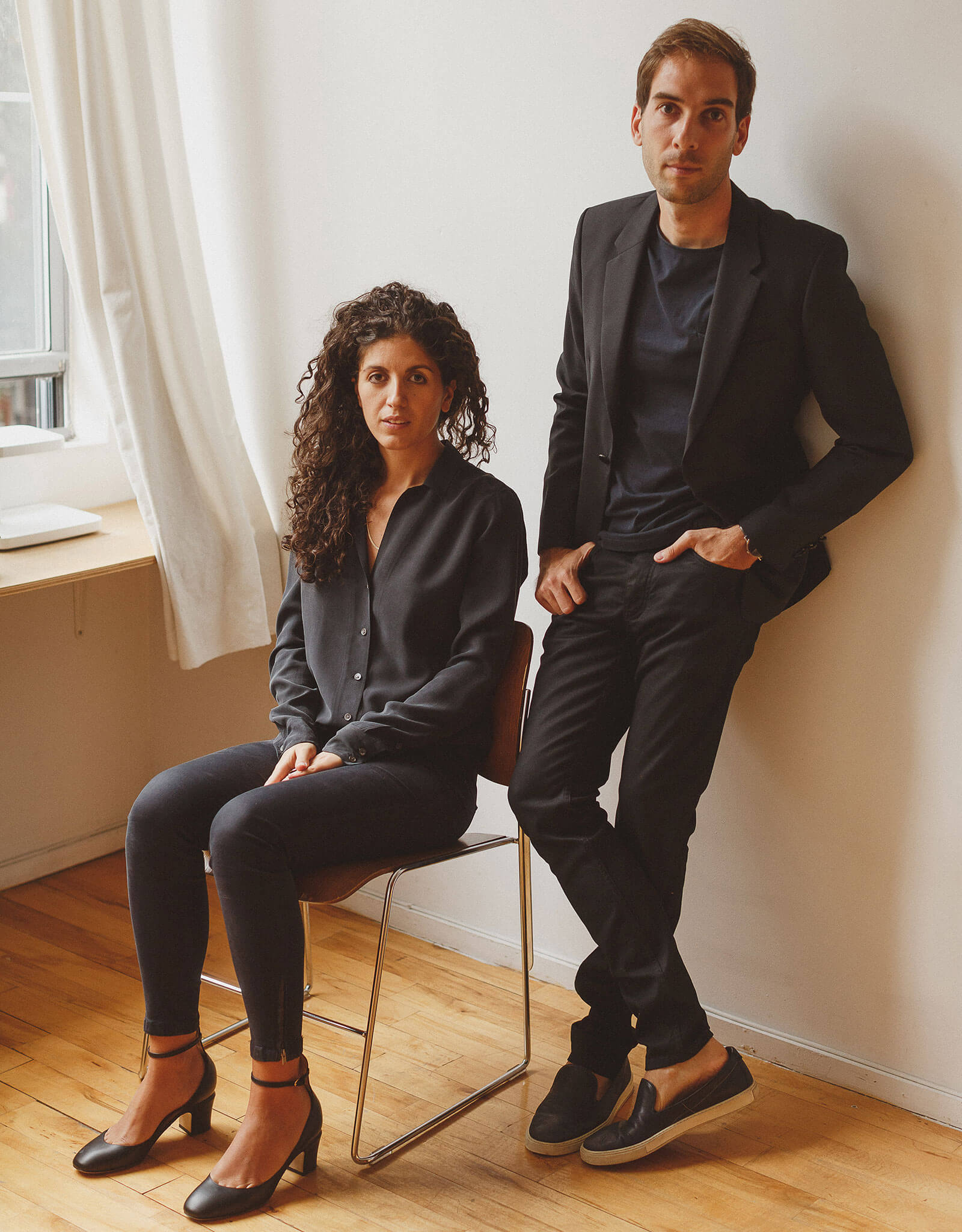
Eleni Petaloti and Leonidas Trampoukis of Objects of Common Interest
COURTESY: Objects of Common Interest
The internationally-renowned duo persevered and continued to extoll the “fantastic craftsmanship” in Greece, such as a seventh-generation marble craftsman on Tinos island. Yet, Petaloti admits that initially her compatriots were dumbfounded about their objects. “When we started talking about collectible design in the studio, people asked: ‘Are you in art or design?’ Only industrial design existed [in Greece].”
Greece is for Lovers, formed by Thanos Karampatsos and Christina Kotsilelou, were also met with bafflement after setting up their studio at the foot of the Acropolis hill in 2005. The duo met at Central St Martins in London and returned to Greece after their studies. “We wanted to do something humorous and sarcastic because at that time everything coming out of Greece was luxury-oriented, imitating Milan,” they explain.
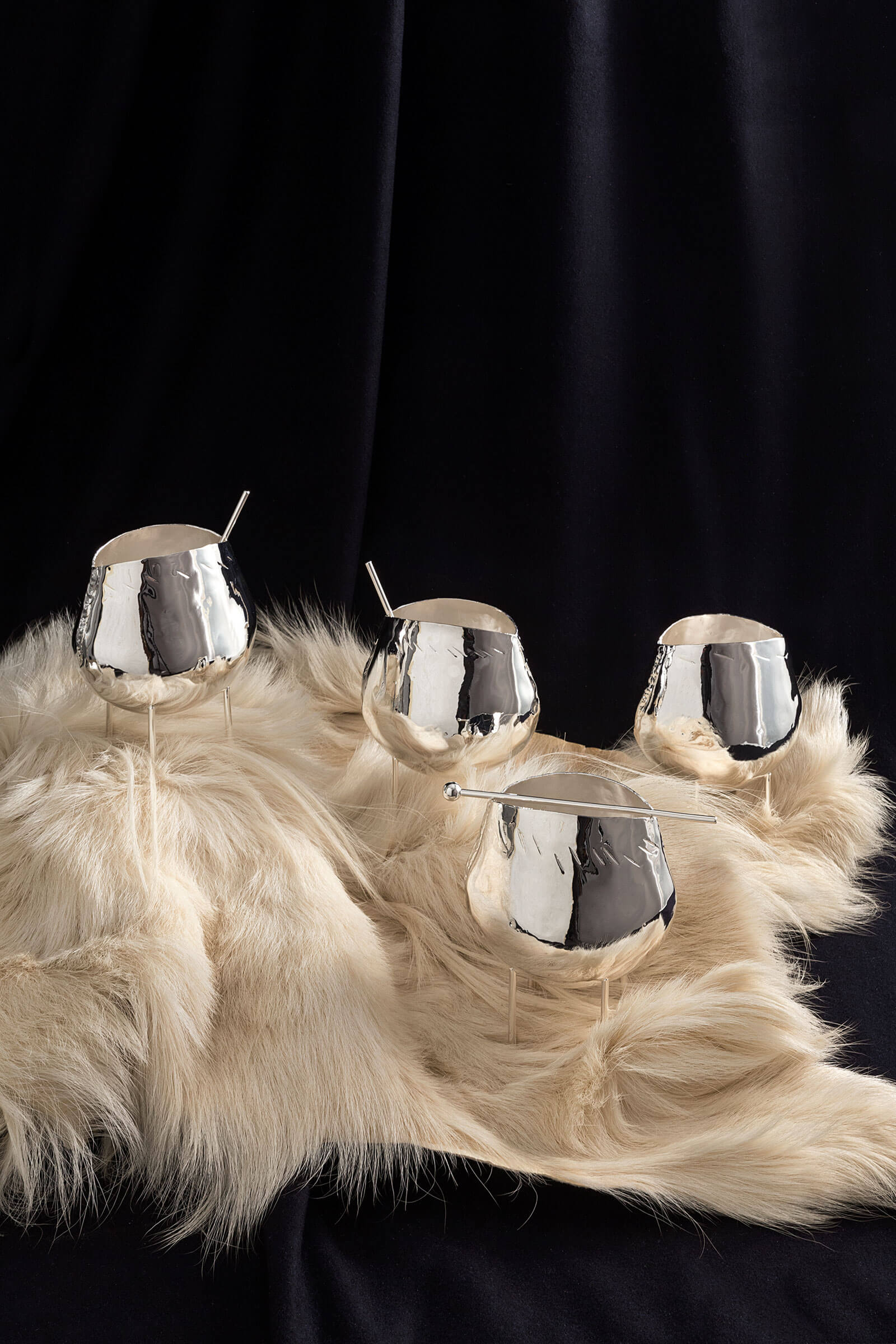
Greece is for Lovers, ‘Arcadia ’21’, 2021
COURTESY: Greece is for Lovers / PHOTOGRAPH: Nikos Alexopoulos
Imbued with a conceptual aesthetic gleaned from London, Karampatsos and Kotsilelou ironise stereotypical images of Greek culture – like the “sunny paradise” and the vernacular. Take ‘The Harder they Come’ (2014), a swivel stool with three blue reinforced steel bars and a seat made from Aegean marble pebbles. It references the many buildings on standby in Greece, extruded bars visibly dominating the skyline, and how marble scraps can be found on Damouchari beach in Pelion. “A quarry would throw its offcuts into the sea and the tide would bring them back to the shore,” they say. The piece was included in a group art exhibition, ‘The Love Boat’, last year in the Athens Municipal Garbage Trucks’ Depot that promoted recycling. Such projects have often been shown in art exhibitions due to the design scene being less established. “I think we’ve jumped from zero [place for limited design] to ‘collectible design’ straight away,” they say, adding that the diversity of creative expression is now becoming “more confident and extrovert”. Their new project, ‘Arcadia’, is a sculptural bell inspired by goats’ bells; it was created, with unabashed patriotism, to celebrate the bicentennial of Greece’s independence from Ottoman occupation.
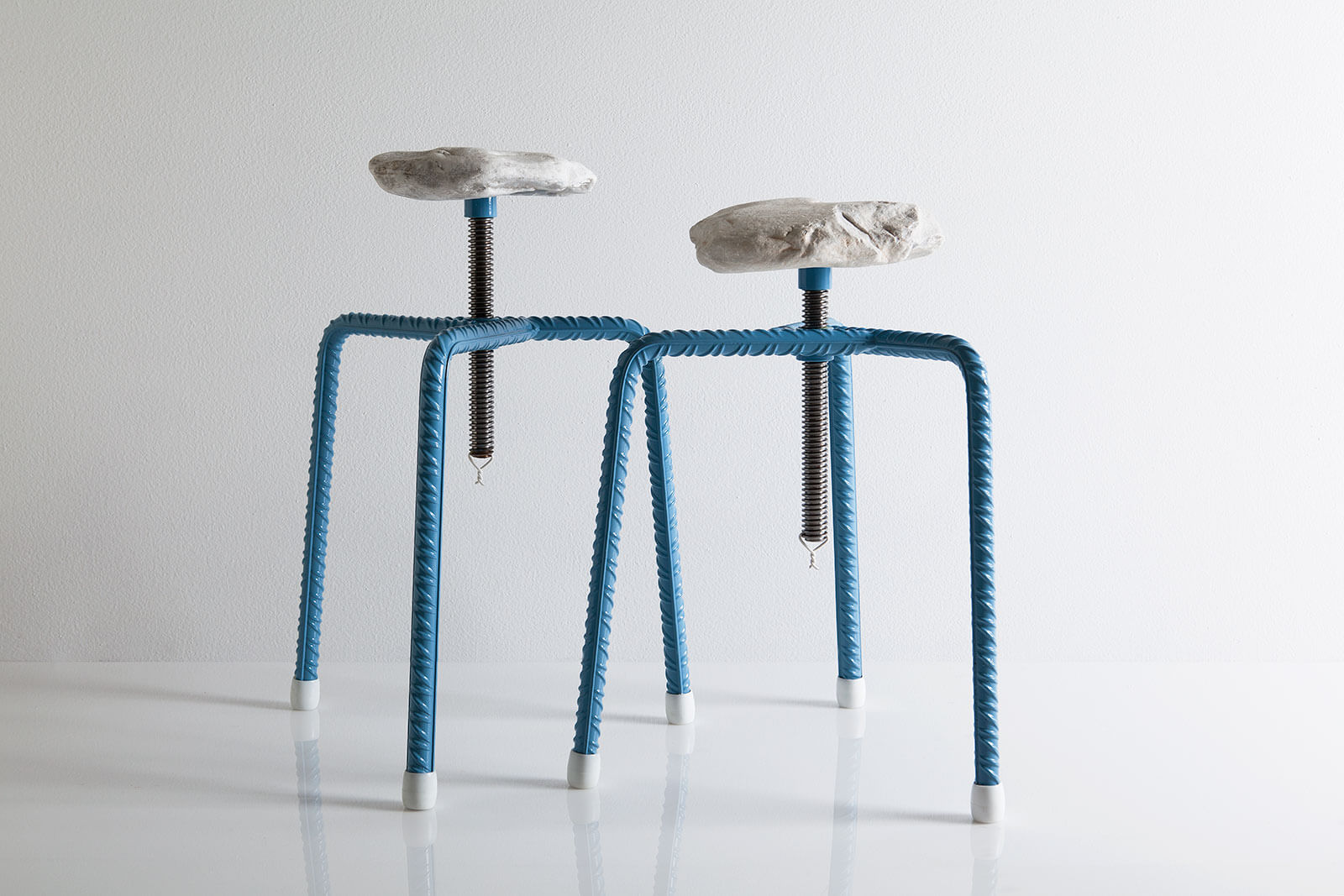
Greece is for Lovers, ‘The Harder they Come’ chairs, 2014
COURTESY: Greece is for Lovers / PHOTOGRAPH: Nikos Alexopoulos
Although more designers are trickling back to Athens, Greece could nurture its own talent better, believes Steven Petrides, one half of the duo Voukenas Petrides. Petrides, an American architect whose grandfather had immigrated from Greece, moved to Athens in 2015 to join his partner, Andreas Voukenas. “The sad truth is that the country exports brilliant young Greeks, pumping them out almost systematically because there’s nothing for them here,” Petrides laments. “It’s a tragedy that hasn’t really changed since my grandfather left 100 years ago. How can you have an art scene without young people? Those who replace them are foreigners like me who take advantage of the cheap rents and beautiful weather.”
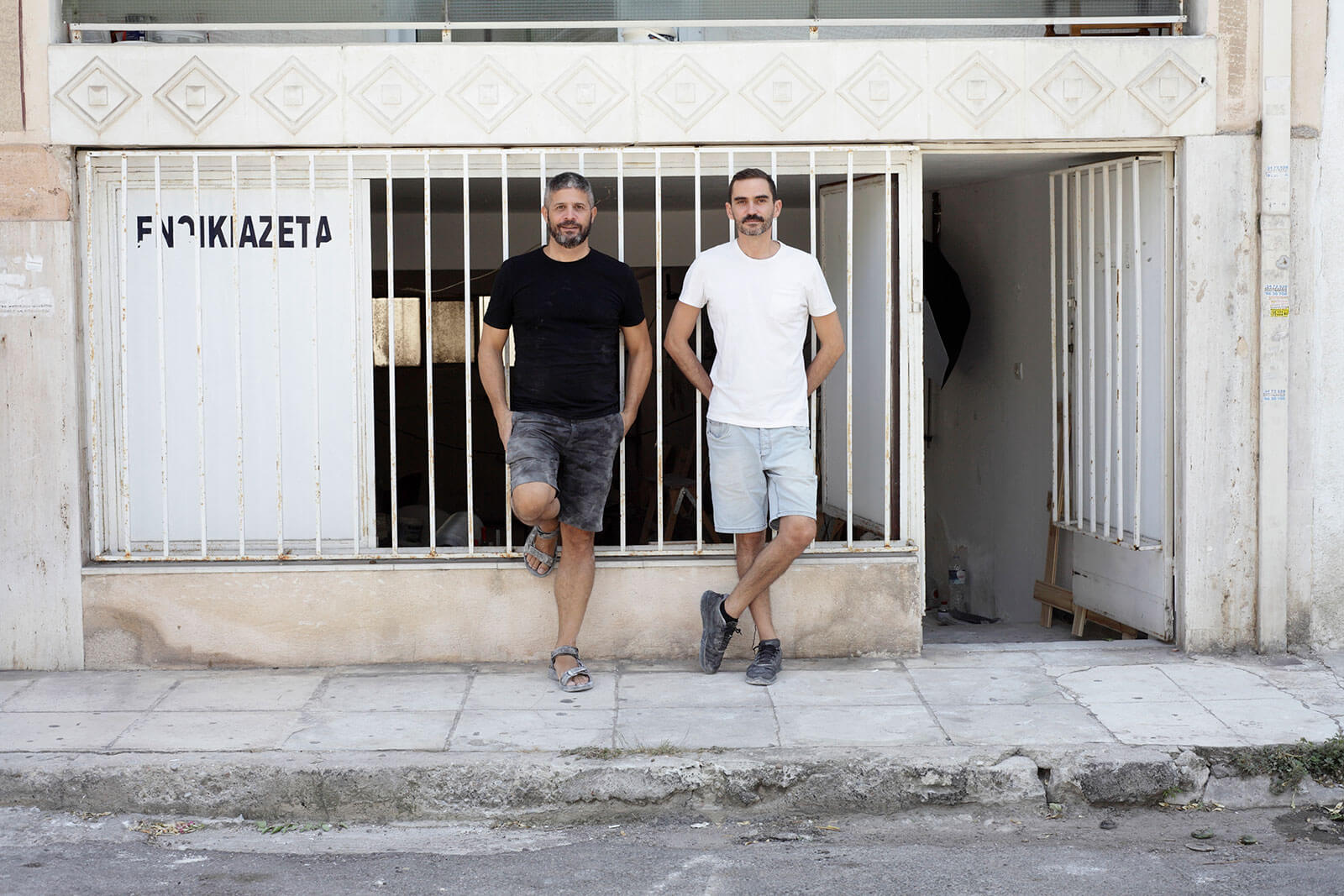
(Left to right): Steven Petrides and Andreas Voukenas of Voukenas Petrides
COURTESY: Voukenas Petrides
Represented by FUMI in London, Voukenas Petrides is known for designing furniture that distorts volumes and tests the laws of gravity and balance. During the pandemic, the duo created a series of ten playful chairs in plaster with overlapping volumes, reminiscent of lovers, that bring a smile to people’s faces. Petrides calls them “anthropomorphic poems”, saying: “I feel like there’s some joy in them, just to remind us that this period won’t last forever and that poetry can be inspiring.” Each piece began with a woven wire mesh, like “a metal fabric that stretches to create all sorts of convex and concave shapes”. When they found a form that they wanted to keep, it was “frozen” in plaster.
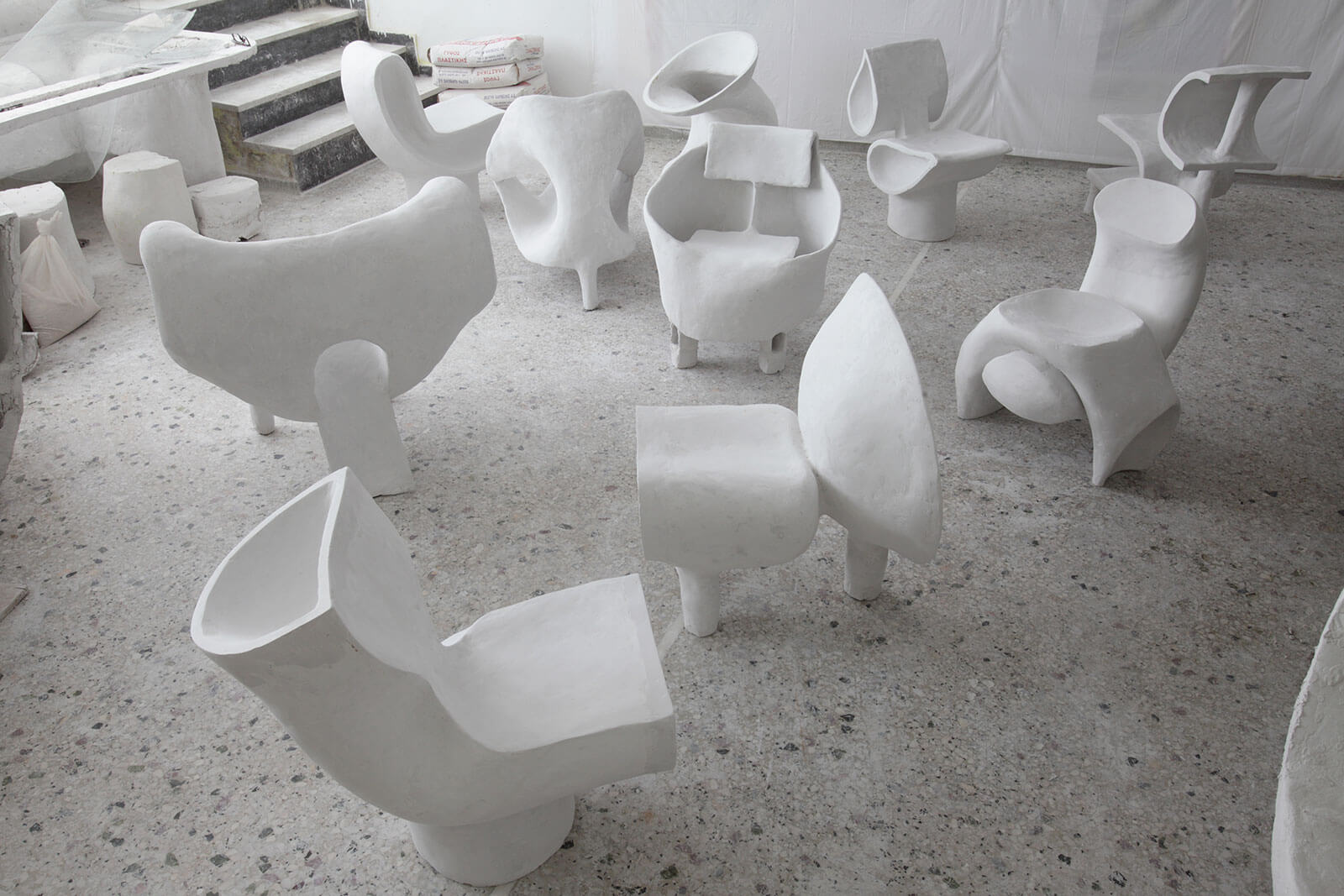
Ten new chairs from Voukenas Petrides, 2021
COURTESY: Voukenas Petrides
Voukenas Petrides has just completed an ambitious new project: a bar for the Greek National Opera in the Stavros Niarchos Cultural Center designed by Renzo Piano. Petrides describes the bar, which was unveiled in July, as a “monolithic, sculptural piece in cast bronze that’s a kind of spiral ribbon in a continuous form.” Despite his gripes with Greece, Petrides excitedly concedes: “It’s an incredible opportunity for us to show our work on a scale that’s never been seen before.”
Another designer helping to shake up the Athens design scene is Savvas Laz. After gaining a MA in Design for Luxury and Craftsmanship at ECAL in Lausanne and interning at Atelier Van Lieshout in Rotterdam, as well as stints in Doha and Berlin, he returned to Athens in 2018. “If you want to enter the international design or art dialogue, it’s important to become acquainted with different cultures and bring that back to Greece to change the context of design,” he says. “Greece has been grounded in crafts since ancient times and my goal was to discover local craftsmen and push materiality, forms and concepts onto a more contemporary path.”
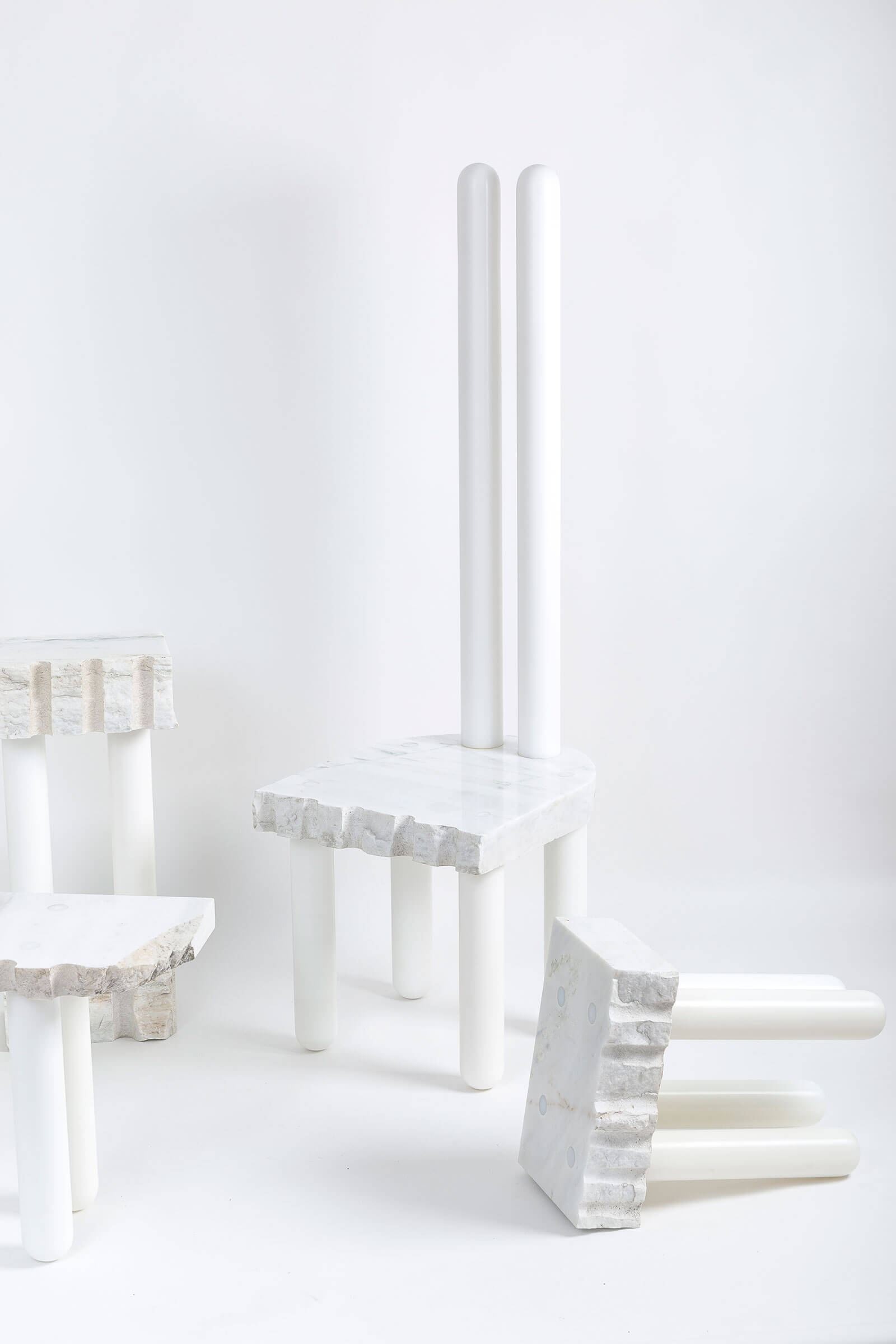
Savvas Laz, ‘Neo-Ancient’ series, 2019
COURTESY: Savvas Laz
“The design field in Athens did not exist five or six years ago but right now it’s becoming more vibrant and alive”
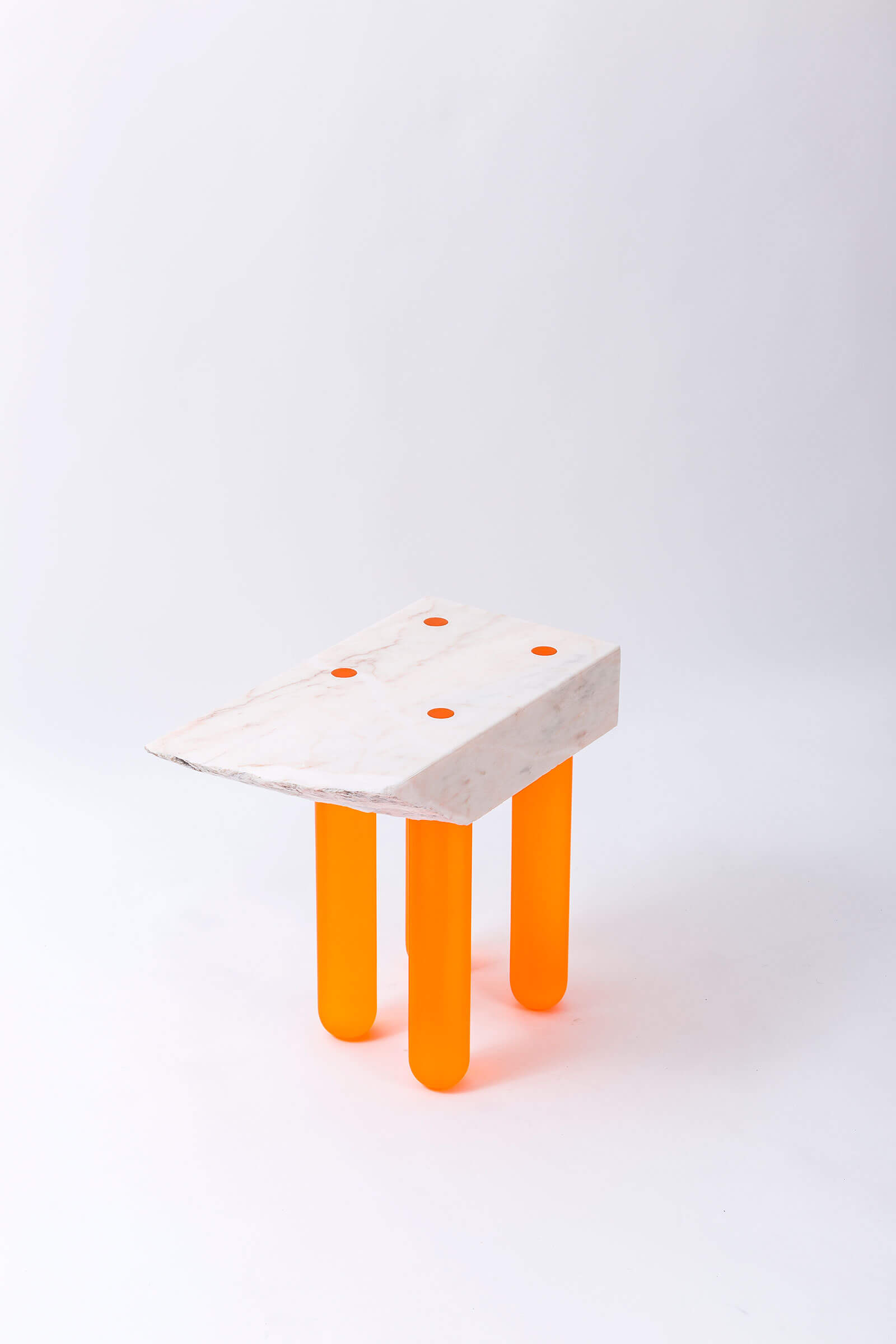
Savvas Laz, ‘Neo-Ancient’ marbled side table, 2019
COURTESY: Savvas Laz
“I feel that I’m witnessing something being born. In 10 or 20 years, we’ll be talking about these years as being something instrumental for art and design”
That path has involved using marble leftovers to make his ‘Neo-Ancient’ series of furniture pieces standing on thermoplastic legs, the holes in the marble being filled by plastic to create a smooth surface. More recently, Laz has been collecting the styrofoam packaging of electrical appliances found in bins throughout the city. Back in his studio (located near the Museum of Contemporary Art) he transforms the packaging into brightly coloured functional objects, the socket shapes from the styrofoam perceptible in the pieces. The result is his ongoing ‘Trashformers’ series, which Laz regards as “primitive and futuristic”. For a collector who prefers to remain anonymous, Laz is filling an entire house on a Greek island with ‘Trashformer’ furniture and objects in every room, including kitchen units, tables and a bed. “It’s very exciting,” Laz says of the project. More broadly, his outlook for Athens is upbeat: “Athens is slowly becoming an international hub,” he says.
The newest returnee is Polina Miliou who Lambridis describes as a “rising star”. She flew back last July after spending five years in Los Angeles, following her architecture studies at the National Technical University of Athens. “I thought I’d come to Athens for two months but I’ve stayed a year!” Miliou, 31, exclaims. She has set up a studio and found a contemporary art gallery, Dio Horia, to represent her. She has created a curvaceous, raspberry-coloured bench with four plump rounded legs for the gallery.
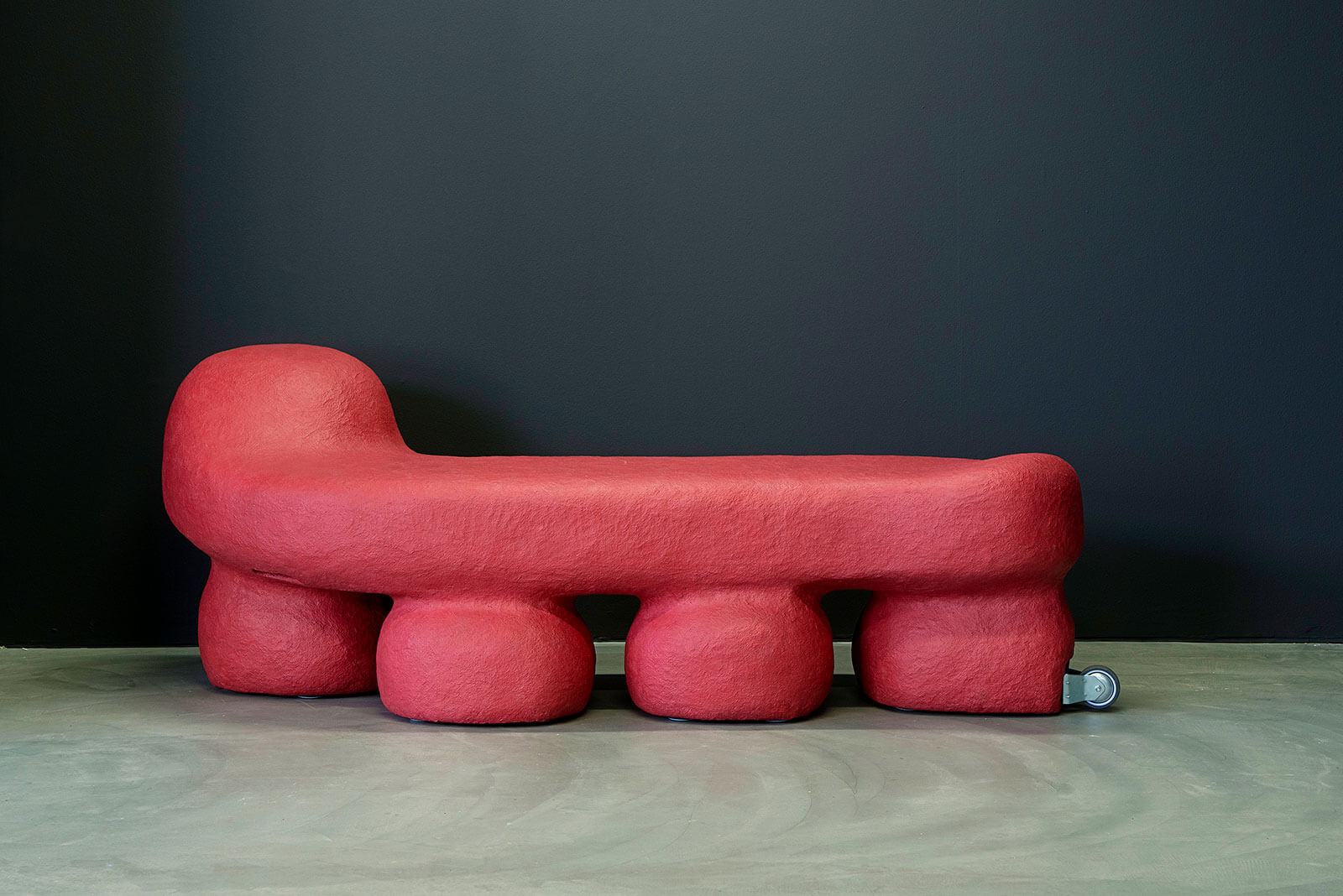
Polina Miliou, ‘Pupa’, 2021
COURTESY: Dio Horia, Athens / PHOTOGRAPH: Alexandra Argyri
The “cuteness and awkwardness” of the personality-infused piece is characteristic of Miliou’s practice, based on sculpting foam coated in paper maché around wooden structures. “I spend a long time caressing [a piece], applying coats of paper maché, as if I were pampering a creature,” she says, adding that she has started incorporating found objects from the street, or the beach, into some of her works.
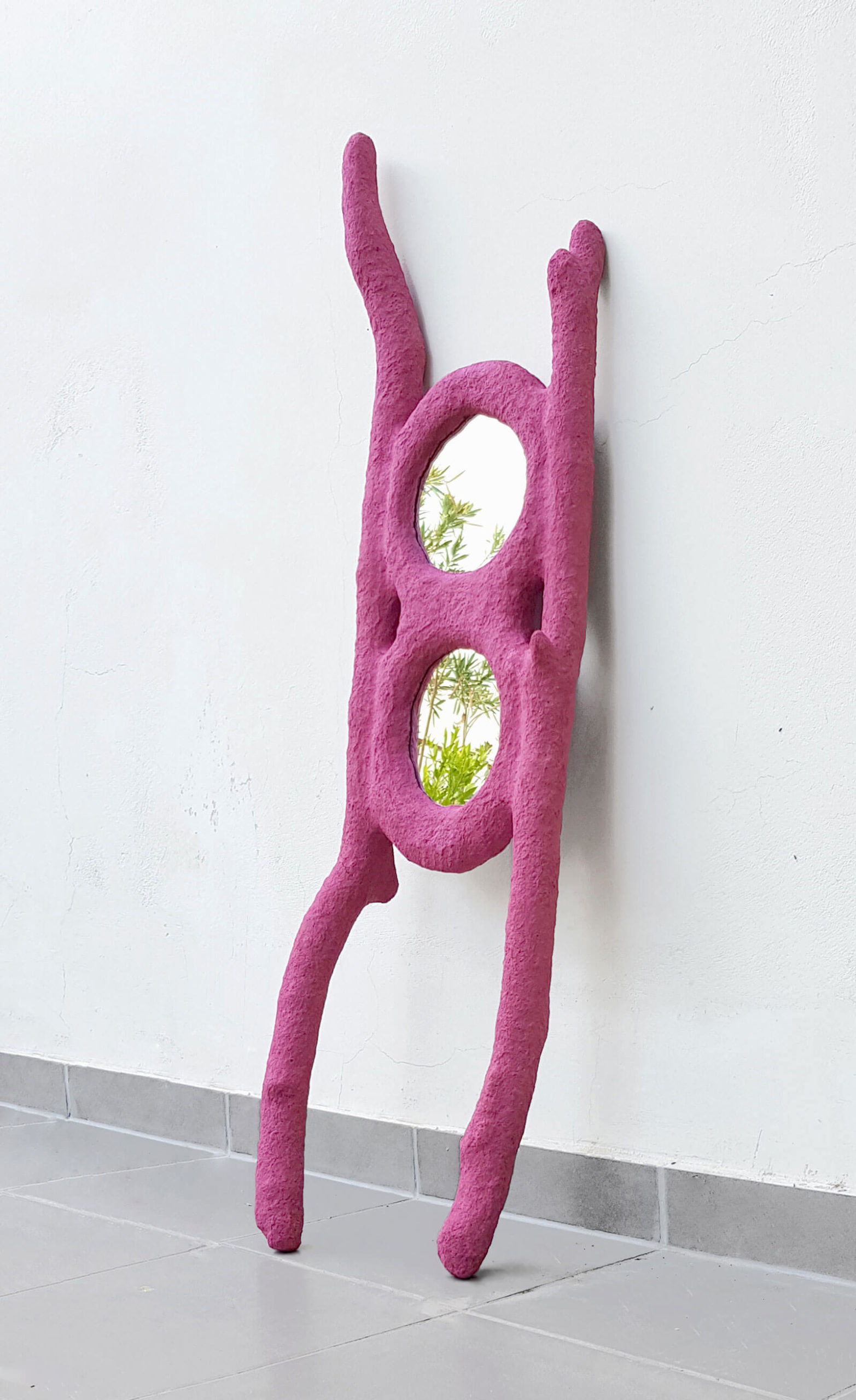
Polina Miliou, ‘Zoomin’, 2020
COURTESY: Polina Miliou
Generally, Miliou draws inspiration from organic forms, the early Cycladic period and the unevenly shaped homes on Greek islands. Yet her confidence in expressing herself creatively stems from her experience in the US. “In Los Angeles, I felt freer to experiment in a crazier way than when I was in Athens and try different things, which changed my design language,” she says. “I wasn’t so afraid and conservative.”
How could Athens evolve further? “More students coming from abroad, more events and more shows would create a [stronger] community of artists and designers that will draw more people,” Miliou believes.
Meanwhile, Lambridis points to the need for more educational infrastructure: “Athens is lacking a university or an academy [specialised in product design].” However, he is optimistic that Athens is on an upward curve: “Once more exhibitions start happening in Athens, like at Carwan Gallery, even young teenagers might see design as a possible professional direction.”




